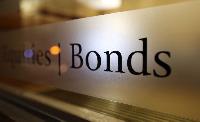
Bonds and equities are two important instruments issued by corporate to mobilize funds. Governments issue bonds as part of their borrowing programme. Bonds are debt, whereas stocks are equity. By purchasing equity (stock), an investor becomes an owner in the issuing entity. Ownership comes with voting rights and the right to share in any future profits. By purchasing a debt instrument like bond, an investor becomes a creditor to the corporation (or government).
A bond is a financial security issued by a borrower to avail long term funds.
Thus a bond is like a loan: the holder of the bond is the lender (creditor), the issuer of the bond is the borrower (debtor). The primary advantage of being a creditor (by purchasing bonds) is that he has a higher claim on assets than shareholders do. That means, in the case of bankruptcy, a bondholder will get his money back before a shareholder. However, the bondholder does not have a share in the profits of a company.
The problem large organizations and a government have is that they usually need far more money than the average bank can provide. Another demanding aspect is that they need this money for a long term. The solution is to raise money by issuing bonds (or other debt instruments) to a public market.
Thousands of investors then each lend a portion of the capital (money) needed. Really, a bond is nothing more than a loan for which the bond holder is the lender. The organization that sells a bond is known as the issuer. We can think of a bond as an IOU (I Owe You) given by a borrower (the issuer) to a lender (the investor).
For an individual buying bond, interest is the reward. The interest rate is often referred to as the coupon. The date on which the issuer has to repay the amount borrowed (known as face value) is called the maturity date. Bonds are known as fixed income securities because the investor knows the exact amount of cash he will get back if we hold the security until maturity.
Following are some basic concepts to understand bonds.
1. Face Value of Bond: In bond investing, face value, or par value, is commonly referred to the amount paid to a bondholder at the maturity date, given the issuer doesn’t default. The face value is also known as the repayment amount.
2. Coupon: A coupon payment on a bond is a periodic interest payment that the bondholder receives during the time between when the bond is issued and when it matures. If a coupon has a face value of Rs1000 and a coupon rate of 5%, then it pays total coupons of Rs 50 per year.
3. Maturity Date: Maturity date is the date when the principal (face value) is paid back. The final coupon and the face value of a debt security is repaid to the investor on the maturity date. The time to maturity can vary from short term (1 year) to long term (30 years).
4. Bond Price: If we buy a new bond and plan to keep it to maturity, changing prices, interest rates, and yields typically do not affect us. But investors don’t have to buy bonds directly from the issuer and hold them until maturity. Instead, bonds can be bought from and sold to other investors on what’s called the secondary market or stock market.
Bond prices on the secondary market (stock market) can be higher or lower than the face value of the bond because the current economic environment (including market interest rate) and market conditions will affect the price investors are actually willing to pay for the bond. And the bond’s yield, or the expected return on the bond, may also change.
*********








